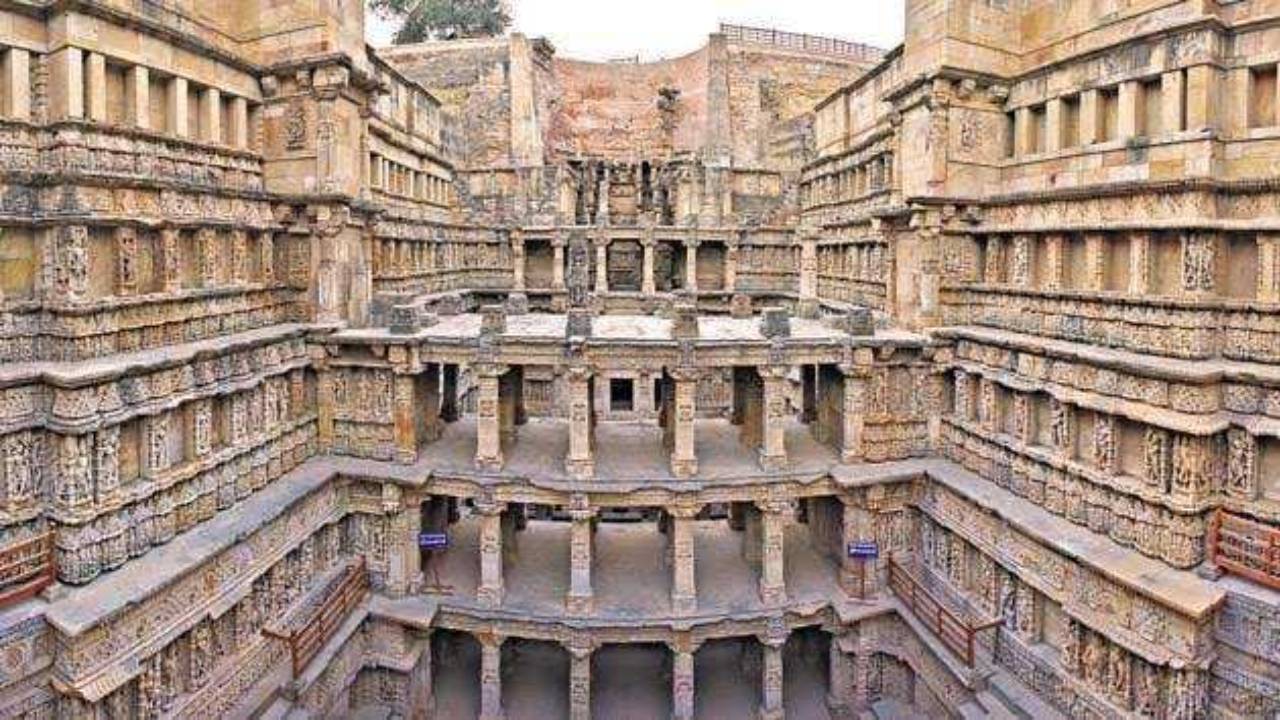Rani ki Vav Amazing Indian Heritage: Rani-ki-Vav, on the banks of the Saraswati River, was initially built as a memorial to a king in the 11th century AD. Stepwells are a distinctive form of subterranean water resource and storage systems on the Indian subcontinent and have been constructed since the 3rd millennium BC. They evolved over time from what was basically a pit in sandy soil towards elaborate multi-story works of art and architecture.
Rani-ki-Vav was built at the height of craftsmens’ ability in stepwell construction and the Maru-Gurjara architectural style, reflecting mastery of this complex technique and great beauty of detail and proportions.
Rani ki Vav Amazing Indian Heritage
Designed as an inverted temple highlighting the sanctity of water, it is divided into seven levels of stairs with sculptural panels of high artistic quality; more than 500 principle sculptures and over a thousand minor ones combine religious, mythological, and secular imagery, often referencing literary works. The fourth level is the deepest and leads into a rectangular tank 9.5 m by 9.4 m, at a depth of 23 m. The well is located at the westernmost end of the property and consists of a shaft 10 m in diameter and 30 m deep.
Rani-ki-Vav is an exceptional example of a distinctive form of subterranean water architecture of the Indian subcontinent, the stepwell, which is located on the banks of the Saraswati River in Patan. Initially built as a memorial in the 11th century CE, the stepwell was constructed as a religious as well as a functional structure and designed as an inverted temple highlighting the sanctity of water. Rani-ki-Vav is a single-component, water management system divided into seven levels of stairs and sculptural panels of high artistic and aesthetic quality. It is oriented in an east-west direction and combines all of the principal components of a stepwell, including a stepped corridor beginning at ground level, a series of four pavilions with an increasing amount of stories towards the west, the tank, and the well in the tunnel shaft form. More than five hundred principle sculptures and over a thousand minor ones combine religious, mythological, and secular imagery, often referencing literary works.
How to go Rani ki Vav Amazing Indian Heritage?
By Road: Intercity buses take 3.5 hours from Ahmedabad to Patan and 1 hour from Mehsana. Shared jeeps are slightly faster, but less comfortable.
By Train : Train can take you to Mehsana (1 hour). From there you have to catch a bus to Patan.
By Air: The nearest airport from Patan is Ahmedabad, which is located at a distance of 125 km. The airport here is in turn connected to international and Indian cities. Patan has a railway station for easy access.
Rani ki vav 360 Degree Video
The only real sign of Patan’s former glory are these astonishingly beautiful steps. Located on the banks of the Saraswati River, this is one of the oldest and finest wavs in Gujarat and is remarkably well preserved. Steps lead down through several tiers with carved columns and lines of over 800 sculptures, mostly on the Vishnu-avatara theme, as well as striking geometric patterns.
The stepwell is built in the form of an inverted temple. It displays the finest craftsmanship of the era, and the unique Gujarat Asmita architectural style and house sculptures such as the Vimalavasahi Temple at Mount Abu and the Surya Temple at Modhera.
| Rani ki Vav amazing Videos | View |
Thanks for visiting this useful post, Stay connected with us for more Posts. Visit every day for the latest offers of various brands and other technology updates.
